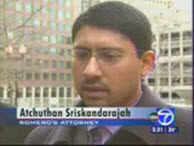
Virginia Environmental Lawyer: Defending Against DEQ Tank Violations & Pollution Protection
As of November 2025, the following information applies. In Virginia, environmental law involves complex state and federal regulations concerning pollution, waste management, and natural resource protection. Individuals and businesses facing charges like DEQ tank violations or pollution complaints need experienced legal defense to understand and respond to these laws effectively. The Law Offices Of SRIS, P.C. provides dedicated legal defense for these critical environmental matters.
Confirmed by Law Offices Of SRIS, P.C.
What is Environmental Law in Virginia?
Environmental law in Virginia is a broad and constantly evolving area of legislation designed to protect the state’s natural resources and ensure public health and safety. This body of law encompasses regulations concerning air quality, water pollution, waste management, hazardous substances, and land use, with a particular focus on preventing environmental harm. The primary state agency tasked with enforcing these regulations is the Virginia Department of Environmental Quality (DEQ). The DEQ is responsible for issuing permits, conducting inspections, investigating complaints, and taking enforcement actions against individuals and entities that violate environmental laws. These violations can range from minor infractions, such as failing to properly document waste disposal, to severe offenses like large-scale industrial pollution or significant DEQ tank violations involving leaks of hazardous materials. Understanding the scope and application of these laws, including federal statutes like the Clean Air Act, Clean Water Act, and Resource Conservation and Recovery Act (RCRA) as implemented at the state level, is fundamental for anyone operating in Virginia, especially businesses that interact with environmental resources or produce waste. Non-compliance can lead to substantial fines, mandatory remediation, and even criminal prosecution, highlighting the importance of adherence and, when necessary, skilled legal representation.
Takeaway Summary: Environmental law in Virginia aims to protect natural resources and public health through DEQ-enforced regulations covering air, water, and waste, with violations leading to significant penalties. (Confirmed by Law Offices Of SRIS, P.C.)
How to Defend Against Environmental Charges in Virginia?
Facing environmental charges in Virginia, whether a DEQ tank violation or another pollution-related complaint, requires a strategic and informed defense. Here’s how you can approach protecting your interests:
- Thoroughly Review the Notice of Violation: Your first step is to meticulously examine the official notice you received. This document will outline the specific regulations you are accused of violating, the alleged facts, and the potential penalties. It’s important to understand the exact nature of the allegations to formulate an appropriate response.
- Collect All Relevant Documentation: Gather every piece of information related to the alleged incident and your operations. This includes environmental permits, compliance records, inspection reports, internal policies, maintenance logs for equipment like tanks, lab results, and all communications with the DEQ or other regulatory bodies. Comprehensive documentation is critical for building your defense.
- Implement Immediate Remedial Actions: If the violation involves an ongoing environmental issue, such as a spill, leak, or unauthorized discharge, take prompt and effective steps to mitigate further harm and comply with any emergency response requirements. Demonstrating a proactive approach to addressing the problem can positively influence the regulatory agency’s perspective and potential outcomes.
- Exercise Caution with Statements: While cooperation with regulatory authorities is generally expected and beneficial, be mindful of what you say. It’s wise to avoid making definitive statements about fault or responsibility without first consulting legal counsel. Statements made without full understanding of the legal implications can inadvertently weaken your defense.
- Engage Experienced Environmental Legal Counsel: This is a vital step. A seasoned environmental lawyer in Virginia has a deep understanding of the complex state and federal regulations, the enforcement practices of the DEQ, and the available defense strategies. They can provide an objective assessment of your situation, advise you on your rights, and guide you through the intricate legal process.
- Challenge the Agency’s Evidence and Procedures: Your attorney can scrutinize the evidence presented by the regulatory agency. This might involve questioning the validity of sampling methods, the accuracy of laboratory analysis, the chain of custody for collected samples, or whether proper protocols were followed during inspections or investigations. Identifying procedural errors or flawed evidence can be key to your defense.
- Pursue Negotiations and Settlement Options: Many environmental cases are resolved through negotiation rather than litigation. Your lawyer can engage with the DEQ or other agencies to explore settlement options, which might include reduced penalties, implementation of environmental compliance programs, or alternative dispute resolution methods. A favorable settlement can avoid the cost and uncertainty of a protracted legal battle.
- Prepare for Administrative Hearings or Litigation: If a negotiated resolution isn’t achievable, your attorney will prepare to represent you in administrative hearings before the DEQ or in court. This involves developing a robust legal strategy, preparing witnesses, presenting evidence, and advocating vigorously on your behalf to protect your interests and achieve the best possible outcome.
Understanding Virginia’s Pollution Protection Regulations
Virginia’s commitment to pollution protection is embodied in a comprehensive set of regulations aimed at safeguarding the state’s air, water, and land from contaminants. These regulations touch nearly every industry and aspect of daily life, requiring individuals and businesses to adhere to strict standards to minimize their environmental footprint. For air quality, the DEQ monitors emissions from industrial facilities, vehicles, and other sources, setting limits on pollutants like particulate matter, sulfur dioxide, and nitrogen oxides. Businesses operating facilities that emit pollutants often need specific air permits and must demonstrate compliance through continuous monitoring and reporting. Regarding water quality, Virginia’s laws, often mirroring federal Clean Water Act standards, regulate discharges into rivers, lakes, and the Chesapeake Bay. This includes industrial wastewater, storm water runoff, and sewage treatment. Permits are required for any discharge, and violations can lead to severe penalties, especially if sensitive aquatic ecosystems are harmed.
Waste management is another critical area, governed by the Resource Conservation and Recovery Act (RCRA) and state-specific rules. This covers everything from solid waste disposal in landfills to the handling, storage, and disposal of hazardous waste. Businesses that generate hazardous waste must comply with strict cradle-to-grave regulations, ensuring proper labeling, storage, transportation, and ultimate disposal. Failure to do so can result in significant fines and liability for cleanup costs. Furthermore, Virginia has specific regulations concerning underground storage tanks (USTs), which are particularly relevant for gas stations, industrial facilities, and agricultural operations. DEQ tank violations often stem from leaks, improper installation, or inadequate monitoring, leading to soil and groundwater contamination. Proactive compliance, regular inspections, and a thorough understanding of these multifaceted regulations are essential for avoiding costly penalties and protecting both your operations and the environment. Ignorance of the law is never a valid defense, and proactively understanding your obligations is always the best strategy.
Can a DEQ Tank Violation Impact My Business?
A DEQ tank violation can unleash a cascade of negative consequences for your business, extending far beyond the initial fine. Imagine a scenario where an underground storage tank on your property leaks, contaminating the surrounding soil and groundwater. The immediate aftermath would likely involve a Department of Environmental Quality (DEQ) investigation, leading to an official notice of violation. From there, the financial repercussions alone can be crippling: significant civil penalties imposed by the DEQ, potentially reaching tens or hundreds of thousands of dollars depending on the severity and duration of the leak. Then comes the mandatory remediation, which involves extensive and costly cleanup efforts—excavating contaminated soil, purifying groundwater, and restoring affected areas. These cleanup expenses can quickly escalate into millions, draining your business’s financial reserves and potentially forcing you to liquidate assets or even declare bankruptcy.
Beyond the direct financial hit, a DEQ tank violation can also trigger a host of indirect and long-term problems. Your operating permits might be suspended or revoked, effectively halting your business operations. Insurers may cancel your coverage or refuse to renew policies, making it difficult to protect against future risks. The reputational damage can be immense; public perception of your business might plummet, leading to a loss of customer trust, negative media coverage, and a boycott of your services or products. This can also deter future investors or business partners. Furthermore, you could face third-party lawsuits from property owners whose land was contaminated by the leak, or from individuals claiming health impacts. Employees might also lose their jobs if the business cannot sustain itself through the crisis. The ripple effect of a single DEQ tank violation underscores why immediate and effective legal defense is not just advisable, but absolutely necessary to protect your business’s future.
Why Hire Law Offices Of SRIS, P.C.?
When you’re facing the daunting reality of environmental charges in Virginia, you don’t just need a lawyer; you need a dedicated advocate who truly understands the gravity of your situation and is prepared to fight for your rights. At the Law Offices Of SRIS, P.C., we recognize the immense pressure and uncertainty that accompany accusations of DEQ tank violations, pollution protection failures, or other environmental legal challenges. Mr. Sris leads our firm with a steadfast commitment to providing robust, client-focused defense, ensuring that your interests are protected at every turn.
Insight from Mr. Sris: “I find my background in accounting and information management provides a unique advantage when handling the intricate financial and technological aspects inherent in many modern legal cases.” This invaluable perspective allows us to dissect the complex details of your environmental case with precision, particularly when it involves intricate technical data, financial implications of compliance or non-compliance, and the often-dense regulatory requirements. Our approach isn’t just about legal theory; it’s about practical application and understanding the real-world impact on your business or personal life.
We are dedicated to helping you understand the specifics of the charges against you, defending your rights vigorously, and working tirelessly to achieve the most favorable outcome possible. We know that environmental law can be intimidating, but with Law Offices Of SRIS, P.C. by your side, you gain counsel who is experienced in working through these intricate legal details. Don’t allow environmental accusations to jeopardize your future, your livelihood, or your business’s standing.
Law Offices Of SRIS, P.C. has locations in Fairfax, Virginia. Our office is located at 4008 Williamsburg Court, Fairfax, VA, 22032, US. For immediate assistance and to discuss your environmental legal concerns, you can reach us directly at +1-703-636-5417. Call now to schedule your confidential case review and take the first step towards resolving your environmental legal challenges.
Frequently Asked Questions About Environmental Law in Virginia
- Q: What is the Virginia Department of Environmental Quality (DEQ)?
- A: The Virginia DEQ is the state agency primarily responsible for protecting and improving Virginia’s environment. They develop and enforce environmental regulations, issue permits for various activities, and monitor compliance related to air quality, water quality, and land protection across the Commonwealth.
- Q: What are common environmental violations in Virginia?
- A: Common violations include unauthorized discharges into state waters, air pollution emissions exceeding permitted limits, improper disposal or storage of hazardous waste, DEQ tank violations related to underground storage tanks, and non-compliance with required environmental permits for industrial or construction operations.
- Q: What are the penalties for environmental violations in Virginia?
- A: Penalties for environmental violations vary significantly based on severity. They can include substantial civil fines, mandatory cleanup and remediation costs for environmental damage, injunctive relief requiring specific actions, and in severe cases, criminal charges leading to imprisonment and substantial criminal fines for individuals or corporate officers.
- Q: How long do I have to respond to a DEQ notice of violation?
- A: The typical response time usually depends on the specific notice issued by the DEQ. It’s imperative to review the notice promptly for any stated deadlines, which often range from 15 to 30 days, to submit a response or demonstrate actions taken to address the non-compliance issue.
- Q: Can I appeal a DEQ decision or penalty?
- A: Yes, generally, individuals and businesses have the right to appeal adverse DEQ decisions or imposed penalties. The appeals process typically begins with administrative review hearings within the DEQ and, if unresolved, can escalate to judicial review in the state courts. Legal counsel is important for this process.
- Q: What is pollution protection, and how does it apply to businesses?
- A: Pollution protection involves implementing proactive strategies and best practices to reduce or prevent the generation of pollution at its source, rather than managing it after it’s created. For businesses, this means adhering to regulations for waste minimization, proper chemical storage, emissions controls, and efficient wastewater treatment to avoid violations and promote environmental stewardship.
- Q: Do I need a lawyer for an environmental compliance audit?
- A: While not always legally mandated, engaging legal counsel for an environmental compliance audit offers significant advantages. An attorney can help interpret complex regulations, ensure findings are protected by attorney-client privilege, and advise on appropriate corrective actions to mitigate risks and prevent future issues effectively.
- Q: What is a confidential case review, and how can I get one?
- A: A confidential case review is a private, initial discussion with an attorney about the specifics of your legal situation. It’s an opportunity to receive preliminary legal advice and understand your options without any immediate commitment. You can obtain one by contacting Law Offices Of SRIS, P.C. by phone.
- Q: What is the role of federal environmental laws in Virginia?
- A: Federal environmental laws like the Clean Air Act, Clean Water Act, and RCRA establish baseline standards that Virginia must meet or exceed. The DEQ often implements these federal laws through state-specific programs and permits, meaning federal statutes directly influence state regulations and enforcement actions.
- Q: Can environmental violations lead to criminal charges?
- A: Yes, severe or intentional environmental violations, particularly those involving hazardous waste or significant pollution that endangers public health or the environment, can lead to criminal charges for individuals and corporate officers, resulting in imprisonment and substantial criminal fines, in addition to civil penalties.
The Law Offices Of SRIS, P.C. has locations in Virginia in Fairfax, Loudoun, Arlington, Shenandoah and Richmond. In Maryland, our location is in Rockville. In New York, we have a location in Buffalo. In New Jersey, we have a location in Tinton Falls.
Past results do not predict future outcomes.






